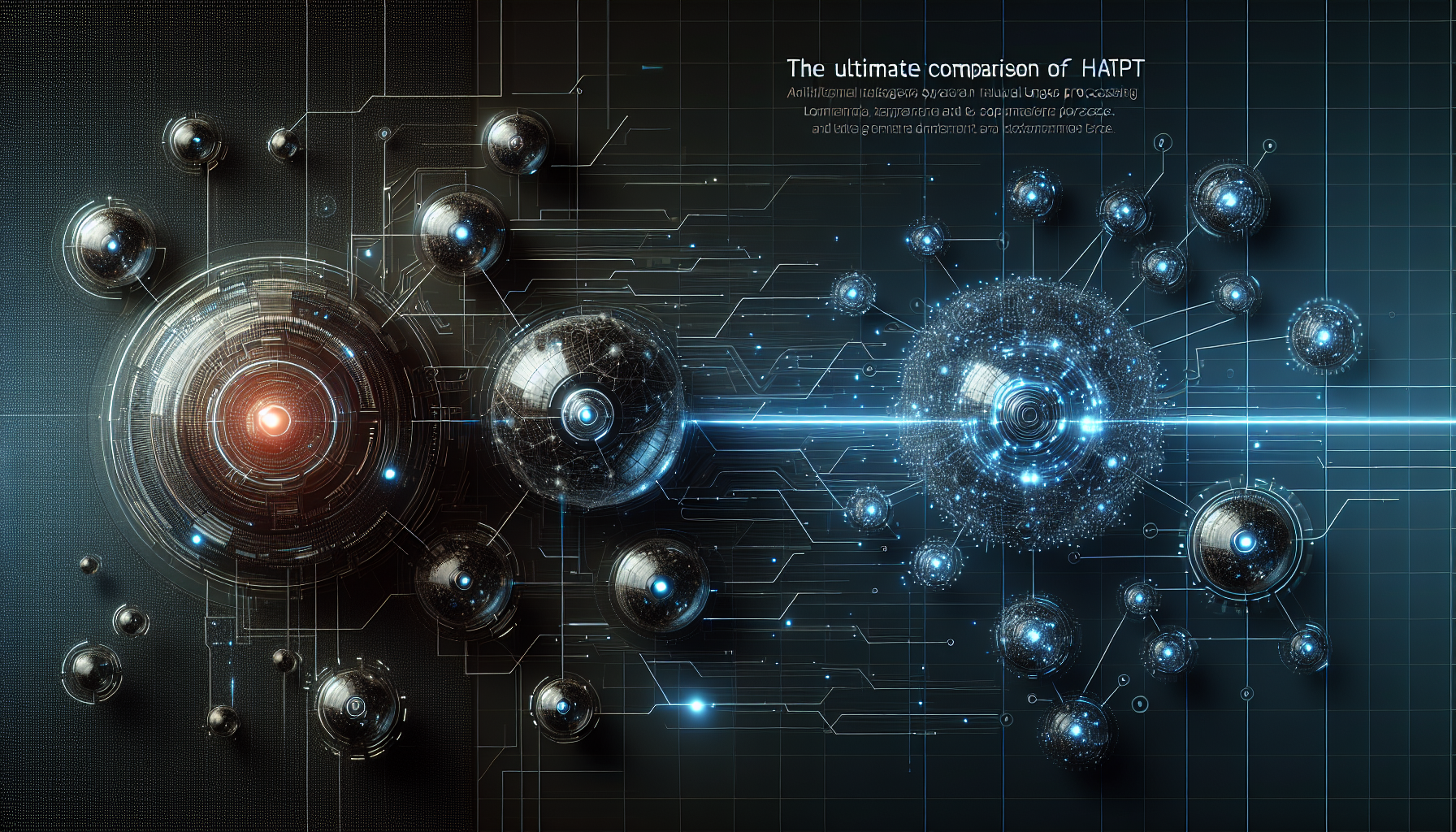Understanding ChatGPT: A Comprehensive Comparison
ChatGPT has revolutionized the landscape of artificial intelligence (AI) by providing innovative solutions in natural language processing (NLP). To grasp its capabilities, we will explore various dimensions including architectures, performance metrics, applications, and the competitive landscape of AI conversational agents.
1. Architecture
At its core, ChatGPT is based on the Transformer architecture introduced by Vaswani et al. in 2017. This architecture enables efficient attention mechanisms, allowing the model to focus on relevant parts of a conversation, thereby generating coherent and contextually appropriate responses. ChatGPT employs a variant of the original transformer model, optimized for dialogue, making it adept at maintaining thematic consistency across interactions.
The model’s foundation consists of several layers of encoders and decoders, capable of process inputs through attention heads that assess the significance of token relationships. This multi-dimensional approach enhances the model’s ability to understand and generate human-like text, elevating the user experience in various applications.
2. Performance Metrics
Evaluating the performance of ChatGPT involves several important metrics:
-
Fluency: Measured by the grammatical accuracy and readability of generated responses. ChatGPT excels in producing fluent outputs that mirror human conversational patterns.
-
Coherence: This metric evaluates how logically consistent and thematically appropriate the text is. Users often report high coherence ratings when interacting with ChatGPT.
-
Relevance: The model’s ability to stay on-topic and provide information relevant to user queries is critical. ChatGPT is designed to maintain relevance throughout the conversation, making it suitable for diverse applications.
-
Response Time: In practical scenarios, the speed at which a model generates responses can significantly impact user experience. ChatGPT offers real-time interaction, ensuring quick replies during conversations.
3. Dataset and Training
Training data plays a pivotal role in shaping ChatGPT’s conversational abilities. The model is trained on a diverse and extensive dataset gathered from books, websites, and other textual resources, encompassing a broad spectrum of topics and styles. To mitigate biases and ensure ethical usage, OpenAI implements several strategies during the training phase, such as fine-tuning with curated datasets and employing reinforcement learning from human feedback (RLHF).
This dataset diversity enables ChatGPT to answer a wide array of queries about technology, science, culture, and more, affirming its utility across numerous fields. However, it’s important to note that the model’s knowledge is limited to what it was trained on, with a cutoff date (for instance, September 2021 for earlier versions). Thus, it may not fully reflect the most current information after this timeframe.
4. Applications
The versatility of ChatGPT allows it to find applications in multiple sectors:
-
Customer Support: Many businesses deploy ChatGPT as virtual agents to handle customer inquiries, providing immediate assistance while reducing operational costs.
-
Content Creation: Writers use ChatGPT to brainstorm ideas, draft articles, or generate creative writing prompts, making it an invaluable tool in content marketing.
-
Education: Educators and students leverage ChatGPT to explain complex concepts, assist with homework, or engage in language practice, enhancing the learning experience.
-
Programming Assistance: Developers utilize ChatGPT for coding support, generating snippets of code, and debugging, significantly boosting productivity during software development.
5. Competitive Landscape
While ChatGPT is a leading player in the conversational AI domain, it faces competition from various innovative platforms:
-
Google’s Bard: A robust AI conversational platform that leverages Google’s extensive search engine capabilities. Bard focuses on providing comprehensive answers to queries, integrating real-time data from the web.
-
Microsoft’s Azure OpenAI Service: This service offers access to various AI models, including GPT-3 and its successors. Microsoft integrates this service into its Office Suite, enabling products like Word and Excel to assist users with AI-driven tasks.
-
Anthropic’s Claude: A newer entrant focusing on safety and alignment in AI. Claude emphasizes ethical considerations and user safety in its conversational AI, appealing to users seeking responsible AI use.
Each of these competitors brings unique strengths, particularly in areas like functionality, integration with existing technology, and ethical governance. Deciding on the best model often hinges on specific user needs and integration capabilities.
6. User Experience and Engagement
User experience stands as a pivotal factor when considering any conversational AI. ChatGPT has been designed with user interaction in mind. The conversational prowess of the model allows for engaging and intuitive dialogues, which can feel personalized and tailored to individual users.
Feedback loops have been crucial for continual improvement; OpenAI actively collects user feedback to enhance operational characteristics and resolve shortcomings in real-time interactions. Such iterative developments ensure that ChatGPT evolves rapidly to meet user expectations and fulfill the demands of various industries.
7. Future Prospects
The evolution of ChatGPT and its peers suggests rapid advancements within the AI field. Potential developments include enhanced multilingual capabilities, improved contextual understanding, and adaptations to integrate emotional intelligence into conversations. As research progresses, the lines between human-like interaction and AI-driven dialogue continue to blur, promising exciting times ahead.
Moreover, the increasing focus on ethical AI and responsible usage signifies a pathway where conversational agents not only serve practical functions but also adhere to crucial ethical standards. OpenAI and its counterparts strive to be at the forefront of establishing these standards, ensuring that advancements in AI technologies benefit society as a whole.
The landscape of conversational AI is an ever-evolving arena, and ChatGPT sits at the intersection of innovation, application, and ethical considerations, making it a vital player in the future of technology-driven communication. By continuously enhancing its capabilities and maintaining user-centric approaches, ChatGPT is poised for sustained growth and relevance in the digital age.


